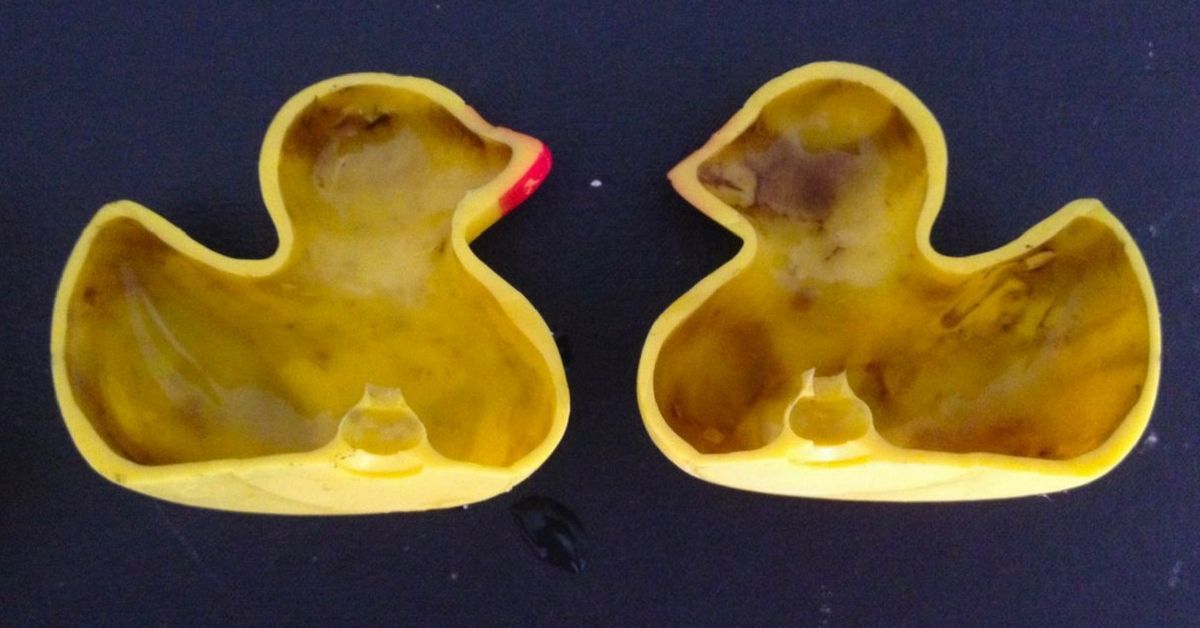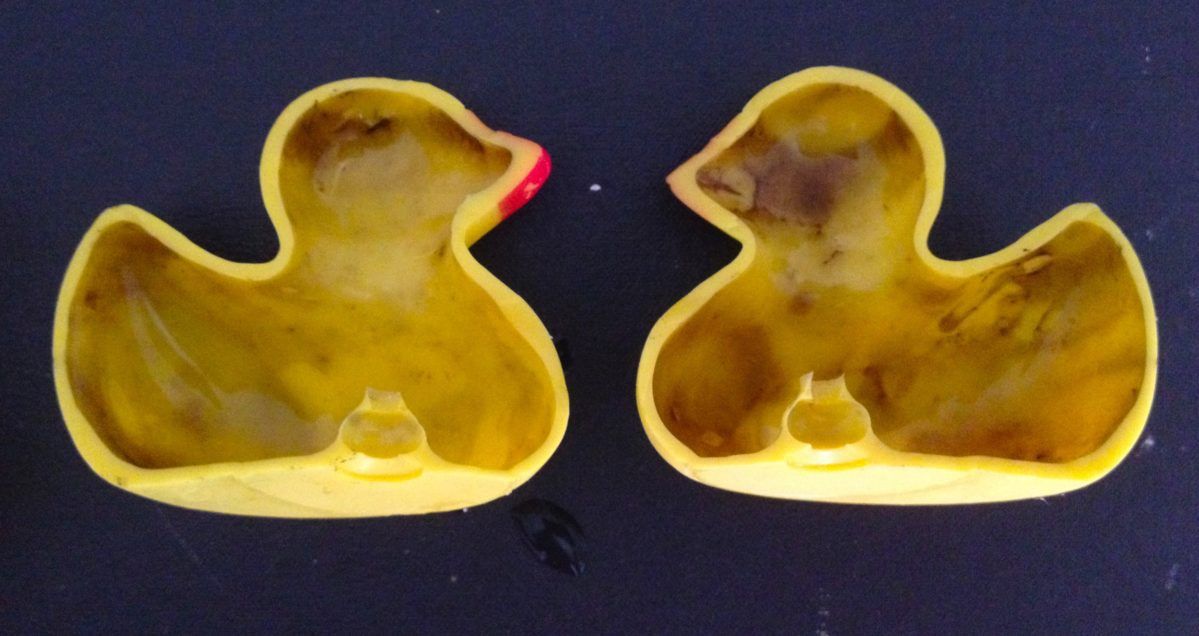Growing up, I had the same rubber ducky toy for years. I won it at the local fair by throwing ping-pong balls into fish bowls, and I treasured it like it was a million dollars. I named him Sunny, because he was wearing these cool sunglasses and I was four years old, so my creative ability was somewhat limited.
That rubber ducky stuck around for a long time, and I'm sure my mom still has it somewhere in a box at her house. But as with everything from when we were kids, there are now concerns surrounding rubber duckies, as well as other common bath toys that come in contact with children on a daily basis.
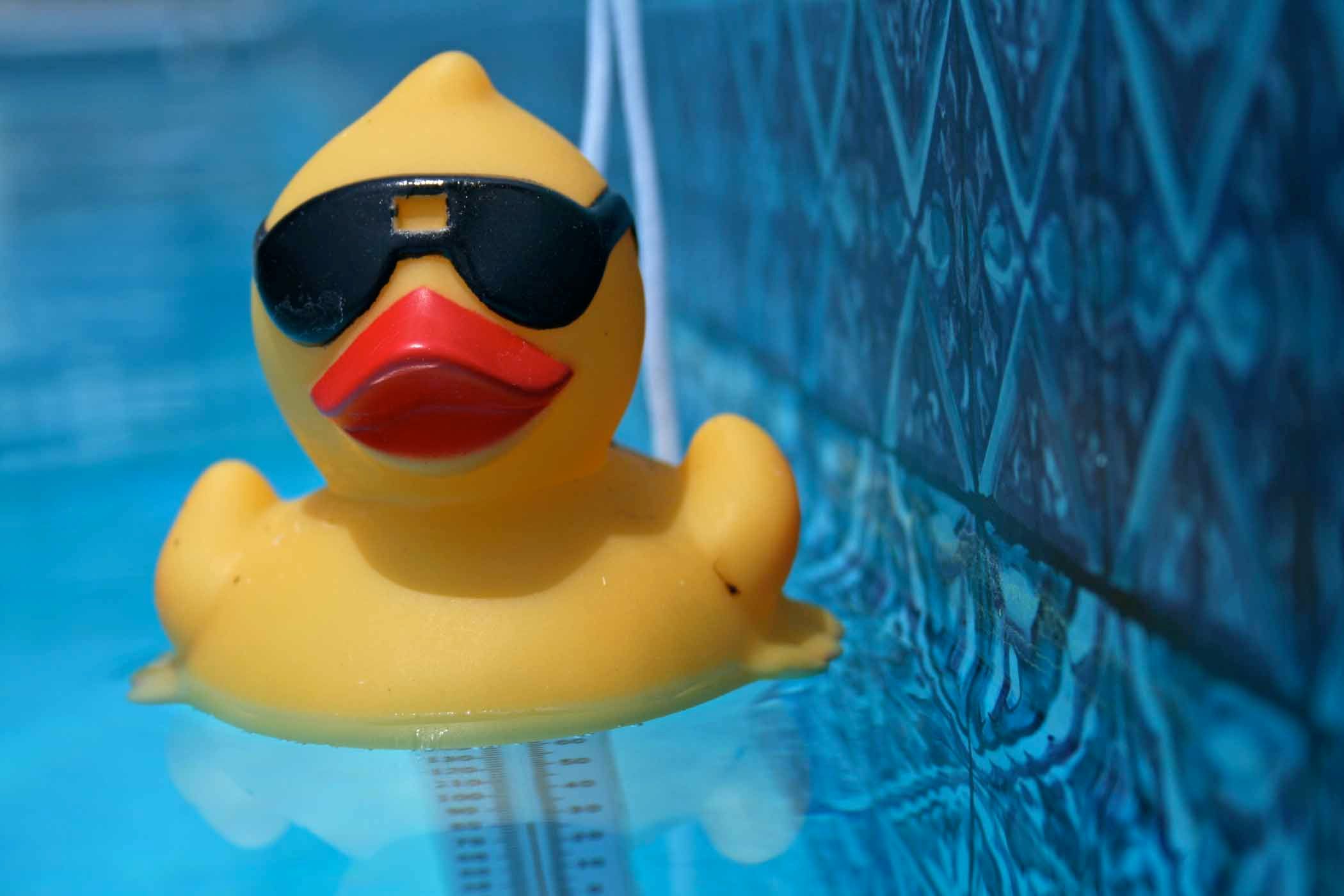
How often are you cleaning your child's bath toys? Probably not frequently, right? It makes sense. Most people assume that if since the toy is already sitting in soapy water, that it's basically clean. Plus, we rarely think about the inside of the toy. The outside is what we see and touch, so why worry about anything else?
That black stuff. That's why.
What is it?
If you look inside any bath toy, or a baby toy for teething and is constantly surrounded by moisture, the chance of mold developing increases exponentially. Through a study by Swiss and American researchers, it was discovered that four out of five, or 80%, of bath toys had microbes and "potentially pathogenic bacteria" inside them.
The fungus growing inside the bath toys is "not detectable in the bath water itself," which means you don't have to worry about the bath being the source of the growth. The problem is that since most bath toys are made of silicone or rubber, the carbon attracts bacteria and sticks to the insides of the toys.
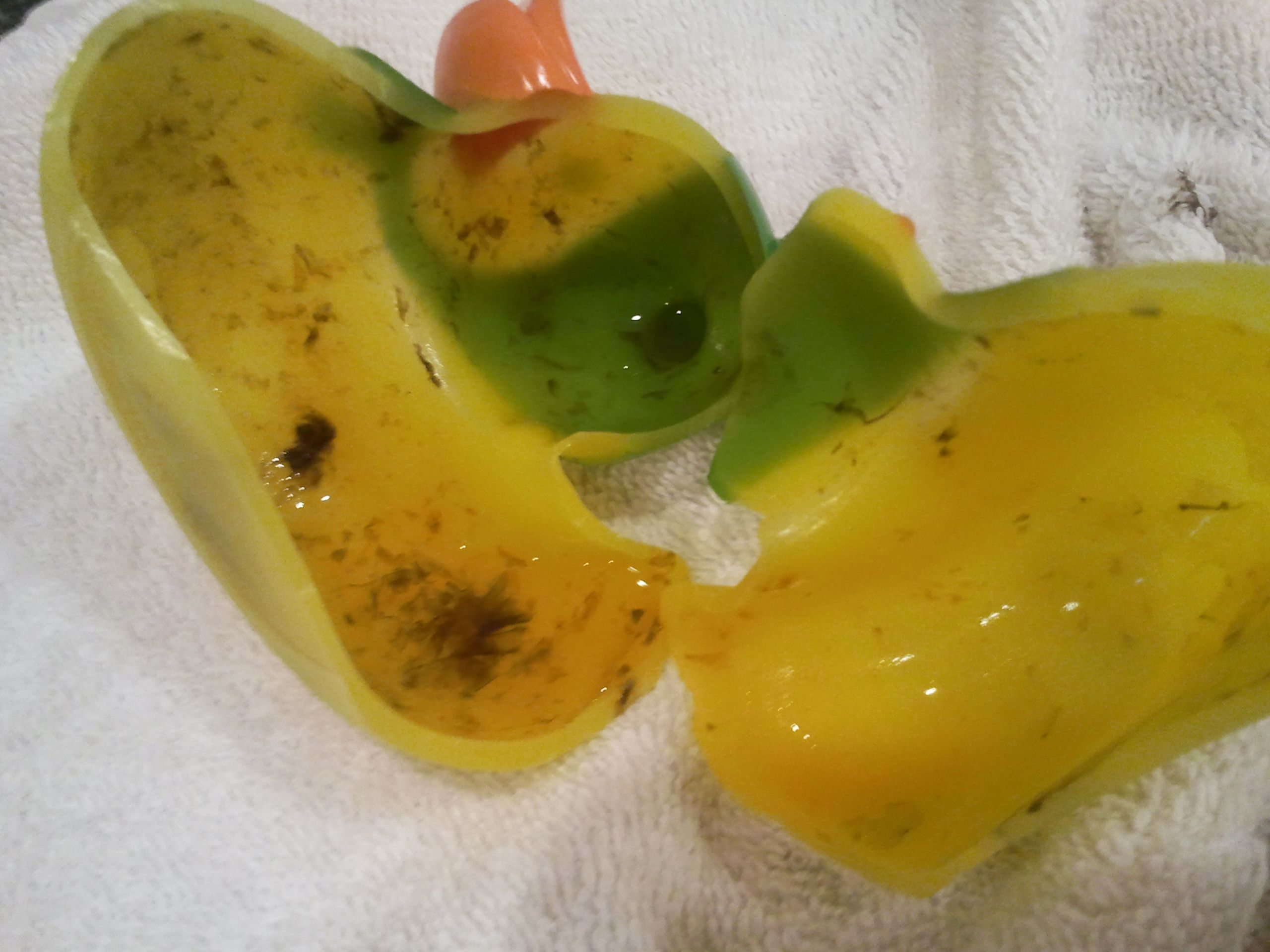
The dirt that gets washed off in the bath, coupled with the susceptible material, makes these toys a breeding ground for mold and fungus.
But what kind of bacteria was found inside the toys?
Legionella
Legionella is a potentially dangerous bacteria, which can lead to legionnaires' disease. This severe form of pneumonia can be fatal if left untreated. Legionella can also lead to something called Pontiac fever, which is less severe and resembles the flu. Legionnaires' disease usuall develops two to 10 days after exposure to the bacteria.
Signs of legionnaires' disease include:
- headache
- muscle pain
- chill
- fever
- cough
- shortness of breath
- nausea
- diarrhea
- confusion
Legionnaires' disease can be treated by antibiotics, but needs to be treated quickly so it does not get worse.
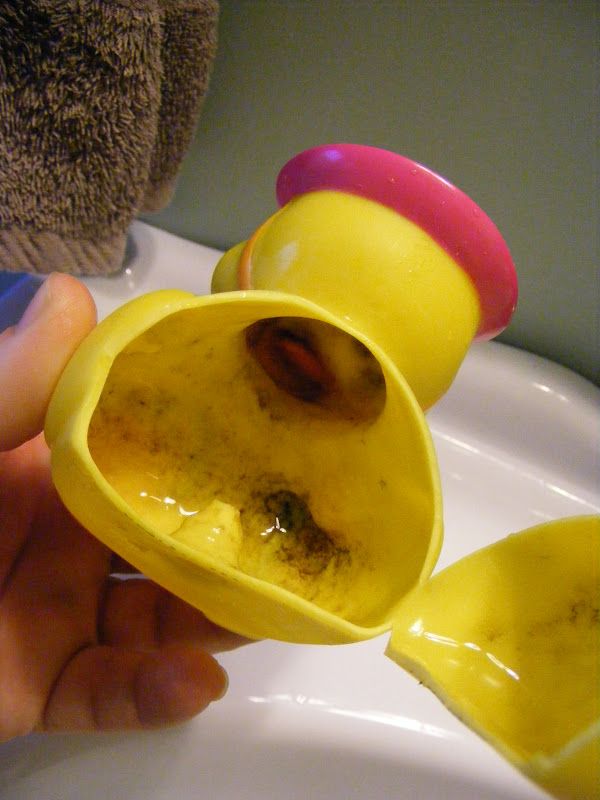
Pseudomonas Aeruginosa
Pseudomonas aeruginosa is extremely dangerous, and in many cases deadly. The bacteria is one of the main causes of serious hospital-acquired infections. It can lead to pneumonia or septicemia, otherwise known as blood poisoning. People who are already healthy don't have to worry too much about this bacteria, but those have are already ill or have compromised immune systems can die from pseudomonas aeruginosa in just 24 hours. Pseudomonas aeruginosa can affect your bones, ears, eyes, heart, bloodstream, urinary tract, and sin.
What does it mean?
I'm not saying it's time to avoid rubber duckies and bath toys all together. That's a little extreme. But the ones you have now are probably full of bacteria and mold. While the amounts inside the toys may be small, over time it can grow and prolonged exposure to pathogenic molds is never a good idea.
If you want your child to have bath toys, look for ones that don't have any openings for water to get inside. Get rid of the ones you have currently and replace them with new versions.
If you're really stuck on the particular toys you have now, there are some ways to clean and take care of them.
1. Glue Gun
The easiest way to stop water and dirt from getting inside your bath toys is getting rid of and openings. Using a glue gun with non-toxic glue, you can seal off and holes the toy might have where water and dirt can get inside.
2. Vinegar
If you don't want to glue the holes shut, or you want to clean toys you already have, then distilled vinegar is your friend. Put the toy in a bowl full of vinegar and squeeze it to suck the liquid inside. Let that sit over night and in the morning, squeeze out the vinegar and watch the gunk all rush out. If that doesn't work, try another round of rinsing. If there is still dirt coming out of the toy, just throw it away.
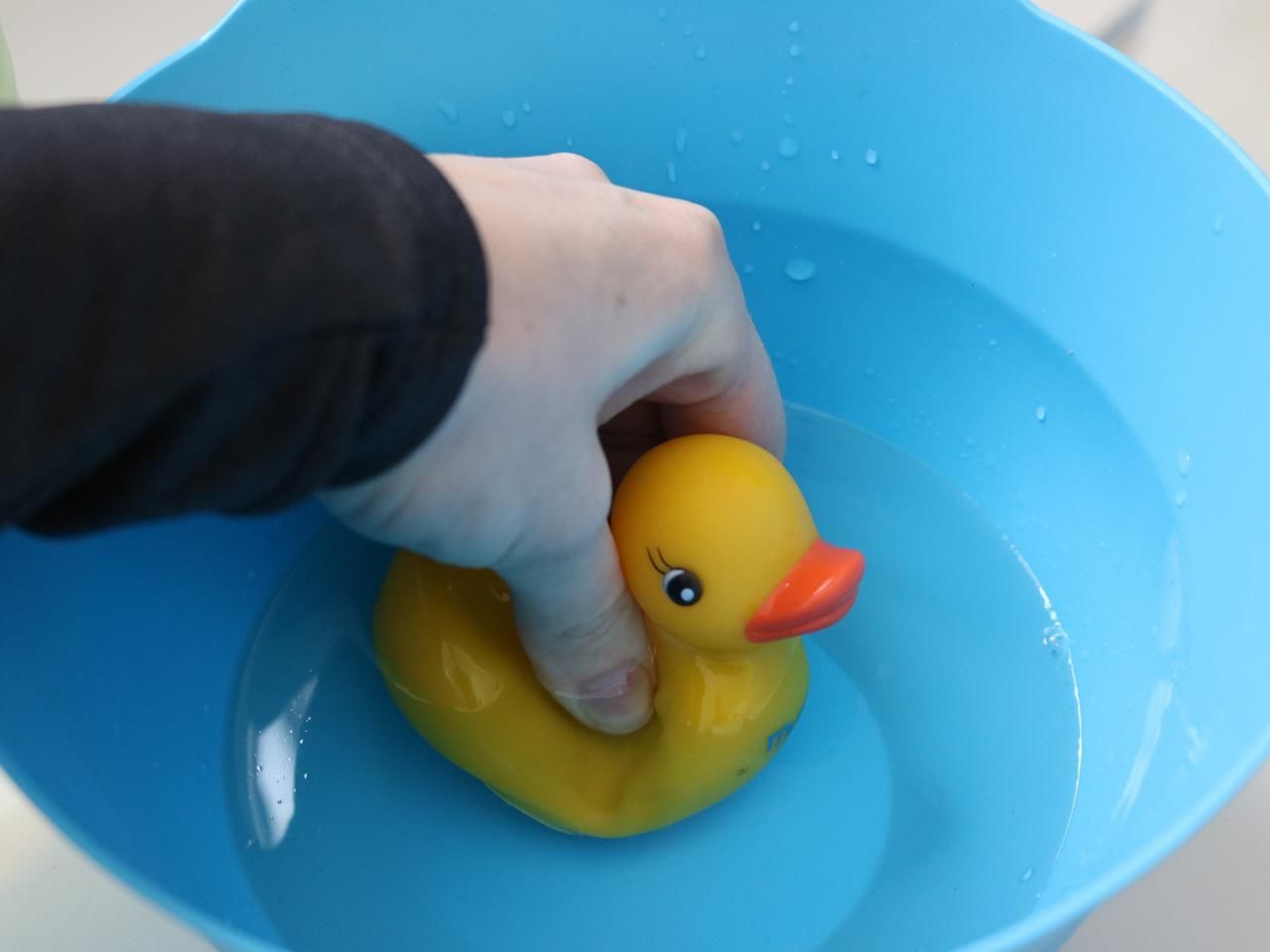
3. Clean Them Weekly
According to Martha Stewart, bath toys should be cleaned at least once a week. Using equal parts hot water and distilled vinegar, plus a few drops of dish soap, let the toys soak for at least 10 minutes and then use a clean toothbrush to scrub off any dirt. The vinegar gets rid of soap scum while the soap takes away any dirt. Rinse the toys in warm water to get rid of the vinegar solution and let them air dry completely.
4. Store Them Properly
Putting a wet bath toy in a closed space, like under the sink in a cupboard, can promote mold growth. It's best to store bath toys in something like a mesh bag, where air can circulate and the toys can drain. Leaving a bathroom window open, or keeping the fan on while the toys dry can also help eliminate the humidity and moisture in the bathroom, which will help prevent mold growth.
Keeping the toys on the tub ledge doesn't allow them to dry properly, which means you're setting yourself up for potentially dangerous bacteria.
